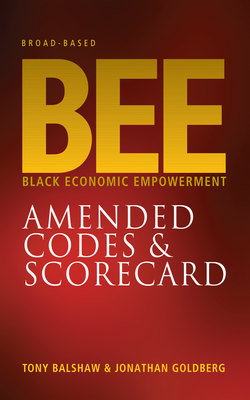Читать книгу Broad-Based BEE - Jonathan Goldberg - Страница 30
На сайте Литреса книга снята с продажи.
Оглавление| 3 | THE NEED FOR CHANGE |
“The need for change bulldozed a road down the centre of my mind.” – Maya Angelou
Change is prevalent in every facet of our society, yet there is often a reluctance to embrace change processes in a business, particularly as regards ownership, in a broad-based BEE context. The typical development phases of start-up, “death valley”, high growth, maturity and inevitable decline should be superseded by renewal for sustainable growth.
Change is complex and the input required for BEE transformation is not necessarily proportional to the output that will be achieved, particularly in the short term. However, those entities that have embraced BEE and transformation in relation to the former Codes generally tell you that after a period of time (sometimes years) the benefits become tangible. These businesses have taken a leap of faith. Unfortunately, such leaps of faith are not the norm, because businesses prefer to move when the future is “known”, or at least when there is enough information to make an informed decision about the future. In the case of Amended BEE Codes we are dealing with an area in which there is a lack of precedents, experiences and information, and so making informed decisions is often difficult.
People don’t surrender their mental models easily. According to Boston-based sociologist, Diane Vaughan: “They puzzle over contradictory evidence but usually succeed in pushing it aside – until they come across a piece of evidence too fascinating to ignore, too clear to misperceive too painful to deny, which makes vivid still other signals they do not want to see, forcing them to alter and surrender the world view they have so meticulously constructed. That ‘piece of evidence’ can come too late. Operating in real time but not in the real world.”
This “piece of evidence” could, for example, be either BEE or some physical event involving the incumbent owner that happens without warning, such as having a heart attack, an accident or a sudden illness.
Complex business and ownership systems are capable of self-organisation but are creative processes that usually occur at the “edge of chaos” – a delicate balance between order and disorder. In essence, life is about continuous change and transformation, with boundaries changing and being permeable. According to psychologist Jane Hilburt Davies, “When you see order, look for complications. When you see chaos, look for patterns and structures.” She goes on to say: “Stability and order are only temporary and illusions.”
The world we live in requires businesses and people to change more rapidly as technology, globalisation and the world’s economies develop and become more advanced. The amount of change we have to embrace is not going to slow down – if anything, it will accelerate.
With broad-based BEE there is talk of “a new fragility” and a dawning realisation that businesses, according to Daniel Goleman, author of Primal Leadership, “have a life span, a natural history: they have an entrepreneurial beginning, followed by a mature phase, and then they pass on – they merge with another company, they’re taken over, or they otherwise morph.”
Individuals or groups experience a behavioural cycle in response to change, according to a University of Gloucestershire researcher, starting with contentment (with the existing situation), followed by denial immediately after the change is initiated (“this can’t be happening to me”), confusion (“what does the change mean to me”), renewal (acceptance and embracement of the change) and, finally, contentment (with the new situation). This cycle is illustrated below.
As people work through the Amended Codes of Good Practice, they experience some aspects of this behavioural cycle. The sooner family businesses move into the renewal phase of accepting, embracing the change and finding contentment in innovative broad-based BEE solutions, the better the prospects will be of their businesses thriving in the South African environment.
Change begets change; in the chaos we must find the unique broad-based BEE patterns, strategies, techniques and structures that work for the business, and take them to the next level.
